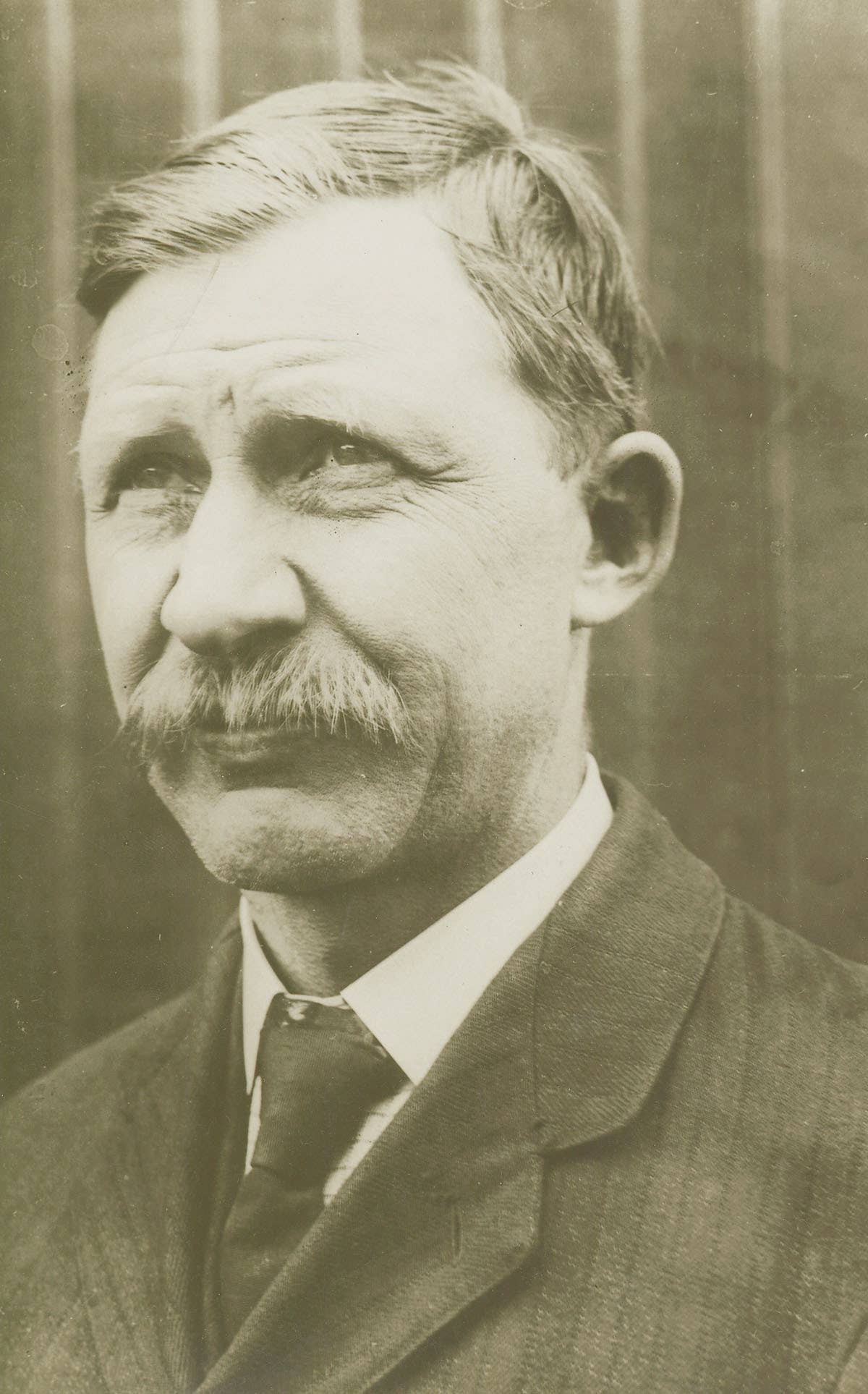Charlie Taylor: The Man Who Made The Wright Brothers Fly
Learn about the career and legacy of the first aircraft mechanic.

Charlie Taylor. Photo courtesy of Wikipedia Public Domain
Orville and Wilbur Wright are widely recognized as pioneers in powered flight, but without Charles E. Taylor, they might never have gotten off the ground. Even though his name has largely been forgotten, "Charlie" Taylor is the man who was able to develop an engine with a sufficient power-to-weight ratio to launch the Wrights at Kitty Hawk and into aviation history. His lightweight and powerful---for its time---1903 Wright engine removed one of the biggest obstacles to powered flight, giving the Wright brothers the edge they needed to take to the skies before their competitors.
Taylor had an innate mechanical ability and was a respected toolmaker. He was working in his own shop when one day Orville and Wilbur Wright came in and asked him to make them some parts. Pleased with Taylor's work, the Wrights continued to bring him special projects---the beginning of a decades-long relationship that would shape the course of aviation history.
Origins
Who was he: The first aircraft mechanic
Original title: Mechanician
Born: Charles Edward Taylor on May 24, 1868
Where: Cerro Gordo, Illinois
Childhood: Grew up in Lincoln, Nebraska
Schooling: Left school at age 12 to go to work, later returned to finish
Graduated: 1887
First job: Errand boy for the Nebraska State Journal, where he discovered his knack for working with tools
Spouse: Married Henrietta Webbert in 1894
Children: One son, two daughters
Settled: Dayton, Ohio
Early Career
Career: Opened his own tool shop in Dayton, Ohio
Job change: Sold his tool shop and went to work at Stoddard Manufacturing, building farm equipment and bicycles
Side gig: Taking on more repairs for the Wright brothers
Career-defining job change: Hired by Wright Brothers to do bike repairs and "mind the shop" in 1901. Later became chief mechanic at the Wright Cycle Company
1903 Wright Engine
Wright brothers' specifications: Needed 9 horsepower and a maximum weight of 180 pounds
Build time: Only 6 weeks!
How: Used hammer, chisel and other hand tools, as well as basic tools, including a drill press and lathe
Power: 12 horsepower
Weight (engine block and crankcase): 152 pounds
Engine block and crankcase: Lightweight, cast aluminum-copper alloy
Cylinder material: Cast iron
Number of cylinders: Four
Cylinder size: Four-inch bore and four-inch stroke
Total displacement: 201 cubic inches
Cooling: Water-cooled
Quirk: No carburetor; instead, gasoline flowed into a shallow pan and engine heat vaporized it
Other Contributions
Wright Flyer parts: Handcrafted all the metal fittings and support wires
Wind tunnel: Machined parts from workshop scraps for the Wright brothers' wind tunnel, enabling their experimentation and data collection
First Fatal Accident
Close call: Narrowly missed becoming the first person to die in a powered airplane accident when someone else took his place at the last minute
First fatality: Army Lieutenant Thomas Selfridge
Seriously injured: Orville Wright
When: Sept. 17, 1908, during a military demonstration flight
Where: Fort Myer, Virginia
First aircraft accident investigator: Taylor examined the accident wreckage to determine the cause of the accident
Probable cause: Delamination of the propeller
Dashed dreams: Taylor asked the Wrights to teach him to fly; however, the brothers refused to teach him because they were afraid that they would lose their talented mechanic
Longtime chief mechanic for the Wrights: At the Wright Cycle Shop; flight operations and school at Huffman Prairie; and the Wright Company, later the Wright-Martin Company
Income: Received a generous salary and later an annuity from the Wright brothers
Later Years
Departure: Left the Wright-Martin Company for California in 1928
Forgotten: Taylor was largely forgotten after he left the Wright-Martin Company
Lost fortune: Lost all his money in a failed real estate investment near the Salton Sea
Poor health: Disabled by a heart attack in 1945
Rediscovered: In 1955 by a journalist who publicized his hardships
Help: Publicity led to funds provided by the Aviation Industries Association to move Taylor to a private sanatorium for treatment
Death: Jan. 30, 1956 (exactly eight years after the death of his friend Orville Wright)
Where: San Fernando, California
Cause: Complications from asthma
Buried: With other aviation pioneers at the Portal of the Folded Wings Shrine to Aviation, Los Angeles, California
Legacy of Charlie Taylor
Last man standing: Taylor outlived both Wright brothers
Witness to aviation history: Saw the first 50 years of flight, from the creation of the first engine to the advent of the jet age
Honored: Inducted into the National Aviation Hall of Fame in 1965
Charles Taylor Master Mechanic Award: The FAA's most prestigious award for certificated mechanics, recognizing lifetime achievement for technicians who have demonstrated exceptional professionalism, skill and aviation expertise in their field for 50 years
Recognized: His image is featured on the back of the FAA mechanic certificates
Remembered: Today, his birthday is celebrated as National Aviation Maintenance Technician Day
Fun fact: No known relationship to Chuck Taylor, the 1920s basketball player and coach, or the Converse All-Star sneakers that bear his name---though there are plenty of mechanics sporting the stylish sneakers today

Subscribe to Our Newsletter
Get the latest Plane & Pilot Magazine stories delivered directly to your inbox






